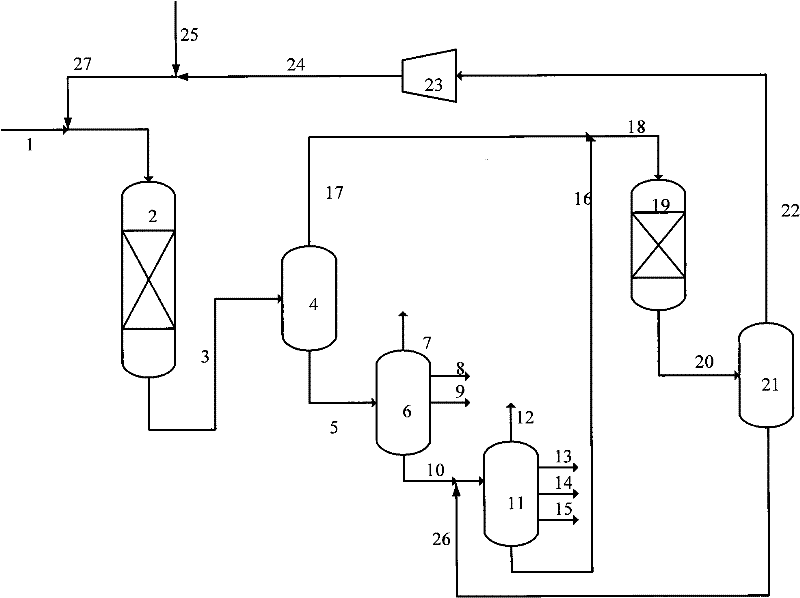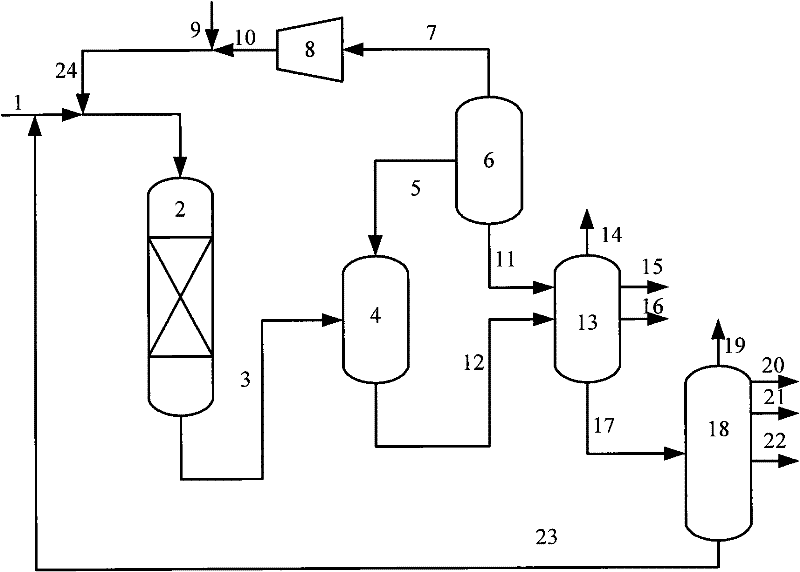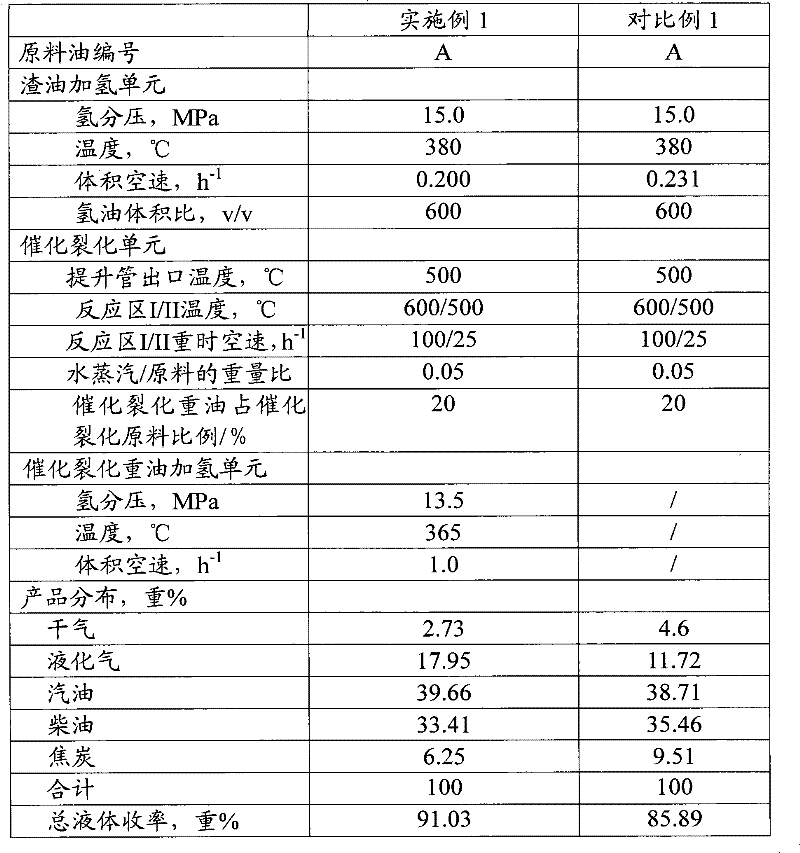Combination method for residue hydrotreatment, catalytic cracking heavy oil hydrogenation and catalytic cracking
A hydrogenation technology of catalytic cracking heavy oil and residual oil, which is applied in the field of hydrocarbon oil processing, can solve the problems of affecting the hydrogenation effect of heavy cycle oil and slurry distillate, high residual carbon value, high asphaltene, etc., to achieve high efficiency Utilization, improvement of cracking performance, and effect of increasing yield
- Summary
- Abstract
- Description
- Claims
- Application Information
AI Technical Summary
Problems solved by technology
Method used
Image
Examples
Embodiment 1
[0038] The heated residual oil A and hydrogen enter the residual oil hydrogenation reactor and react under the action of the residual oil hydrogenation catalyst. The test conditions of the residual oil hydrogenation unit are shown in Table 3. The reactant stream enters the hot high-pressure separator I and is separated as Gas phase stream and liquid phase stream, wherein the liquid phase stream is subjected to normal pressure fractionation to obtain gas, hydrogenated gasoline, hydrogenated diesel oil and residue hydrogenated tail oil, and the residue hydrogenated tail oil is used as the raw material for catalytic cracking. Residue hydrogenation tail oil and hydrocatalytic cracking heavy oil enter the catalytic cracking unit together. The test conditions of the catalytic cracking unit are shown in Table 3. The reaction is carried out in the presence of a catalytic conversion catalyst, and the reaction products are separated to obtain dry gas, liquefied gas, gasoline and diesel oi...
Embodiment 2
[0044] Embodiment 2 adopts residual oil raw material B. Process flow is identical with embodiment 1. The difference from Example 1 is that the obtained FCC heavy oil accounts for 30% by weight of the catalytic feedstock. See Table 4 for the operating conditions of the residual oil hydrogenation unit, the catalytic cracking unit and the catalytic cracking heavy oil hydrogenation unit and the distribution of the final products (the sum of the products of the two units).
PUM
 Login to View More
Login to View More Abstract
Description
Claims
Application Information
 Login to View More
Login to View More - R&D
- Intellectual Property
- Life Sciences
- Materials
- Tech Scout
- Unparalleled Data Quality
- Higher Quality Content
- 60% Fewer Hallucinations
Browse by: Latest US Patents, China's latest patents, Technical Efficacy Thesaurus, Application Domain, Technology Topic, Popular Technical Reports.
© 2025 PatSnap. All rights reserved.Legal|Privacy policy|Modern Slavery Act Transparency Statement|Sitemap|About US| Contact US: help@patsnap.com



